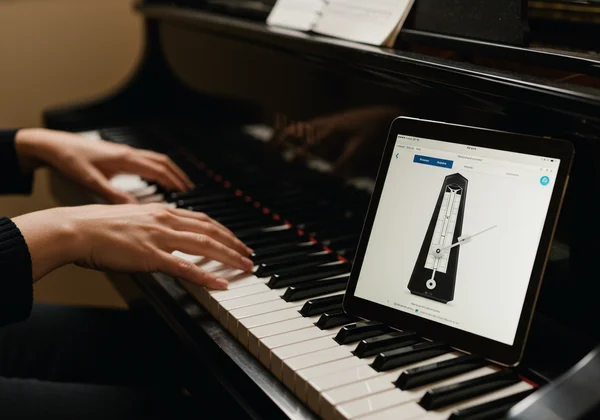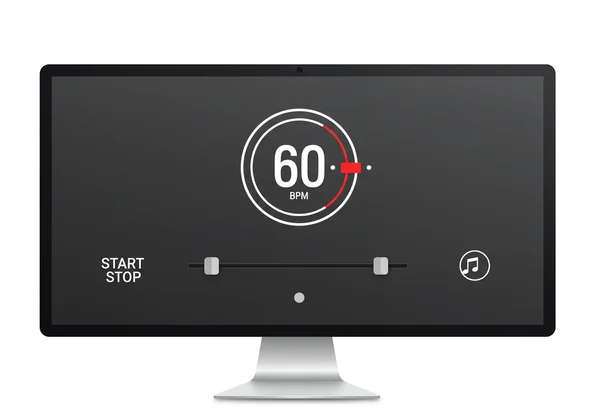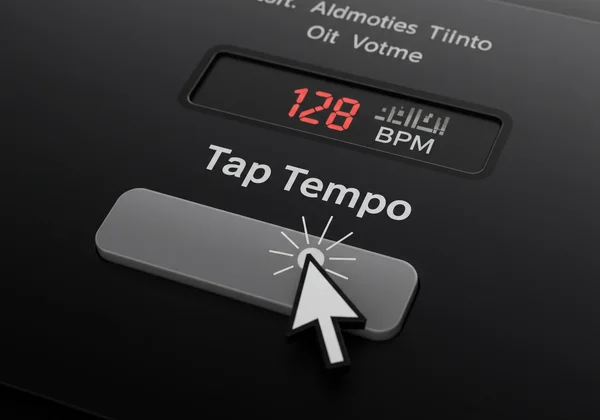Free Online Metronome for Piano: A Complete Practice Guide
Every aspiring pianist knows the feeling. You practice a scale, and it sounds uneven. You tackle a fast passage, only to feel your fingers rushing ahead uncontrollably. There's a persistent, nagging sense that your rhythm is just a little "wobbly." If this sounds familiar, you're not alone. But what if the solution wasn't more frustration, but a simple, powerful tool? Many see the metronome as a chore, but it is the single most effective ally for building a rock-solid technical foundation. Are you wondering how to use a metronome effectively? This guide will transform that ticking box from a source of dread into your secret weapon for achieving professional-level precision.

The metronome for piano is more than just a timekeeper; it's an honest mirror reflecting your rhythmic accuracy. It exposes the subtle inconsistencies that hold your playing back. By embracing it, you embark on a journey toward flawless timing and musical confidence. With a reliable tool like our free online metronome, you have everything you need to begin this transformation right now, directly in your browser.
Why a Piano Practice Metronome is Essential
Before diving into the "how," it's crucial to understand the "why." Using a metronome isn't about robotic, soulless playing. It's about forging a deep, internal sense of time that allows for true musical expression. When your rhythm is secure, you are free to focus on dynamics, articulation, and emotion.
Building Your Rock-Solid Internal Clock
The ultimate goal of using a metronome is to no longer need it. Consistent practice with a steady beat trains your brain and muscles to internalize the pulse. At first, you are consciously following an external source of time. Over weeks and months, that external click becomes an internal feeling—a dependable, unwavering clock inside you. This internal metronome is what allows professional musicians to play with such effortless rhythmic command, whether alone or in an ensemble. It ensures every note lands exactly where it should, creating a foundation of stability for your music.
Achieving Clean, Even Fingering
Do you find your fourth and fifth fingers are weaker or less controlled than your thumb and index finger? This common issue leads to uneven scales and messy arpeggios. A metronome is the perfect diagnostic tool and remedy. The unforgiving click forces every single finger to do its job precisely on time. It gives no leeway to the weaker fingers, compelling them to develop strength and independence. By practicing with a steady pulse, you systematically iron out these inconsistencies, leading to clean, pearly scales and articulate passages that sound polished and professional.
Measuring Your Progress Objectively
How do you know if you're getting better? Feeling faster is subjective, but numbers are not. The BPM (Beats Per Minute) on your metronome is a clear, unbiased metric of your technical progress. Celebrating the journey from struggling through an exercise at 60 BPM to mastering it at 120 BPM provides immense motivation. This quantifiable progress proves that your hard work is paying off. It transforms the abstract goal of "getting better" into a series of achievable milestones. With an easy-to-use online metronome, you can track your speed improvements with precision.
How to Practice Piano with a Metronome
Understanding its importance is the first step. Now, let's get practical. Integrating a metronome into your daily routine requires a structured approach. Here are proven methods for using this tool to elevate your playing, from fundamental exercises to complex pieces.
Mastering Scales and Arpeggios
Scales and arpeggios are the building blocks of piano technique, and a metronome ensures they are built on a solid foundation. Rushing or dragging during these exercises ingrains bad habits, but a systematic approach creates precision. Follow this process:
- Start Slow: Set your metronome to a very comfortable tempo, like 60 BPM. The goal is 100% accuracy, not speed.
- One Note Per Click: Play one note of your scale or arpeggio for every click you hear. Focus on perfect timing and even tone.
- Subdivide the Beat: Once you've mastered one note per click, advance to two notes per click (eighth notes). The click now falls on beat 1, 2, 3, and 4, while you play two even notes within each beat.
- Advance to Sixteenths: When eighth notes are effortless, progress to four notes per click (sixteenth notes). This requires even more control and precision.
Ready to try? There's no better time than now. Open our tool in another tab, set it to 60 BPM, and play your C major scale using the steps above. Feel the difference that perfect timing makes.

Conquering Hanon and Technical Exercises
The principles applied to scales are equally effective for technical exercises like those by Hanon or Czerny. These studies are designed to build dexterity, but without a metronome, they can become a showcase of unevenness. When practicing these technical exercises, start at a tempo where you can play every note perfectly. Don't allow a single mistake. As you become comfortable, increase the BPM by 2-4 increments. This gradual increase challenges your fingers without overwhelming them, ensuring you build speed on a base of accuracy.
Isolating and Fixing Difficult Passages
Every pianist encounters a tricky passage in a piece—a fast run or a complex rhythm that always seems to fall apart. The metronome is your best friend for deconstructing and mastering these sections. Instead of playing the whole piece repeatedly, isolate the problem area. Halve the target tempo and practice it flawlessly with the click. Once it's perfect, begin increasing the speed incrementally, just 4-5 BPM at a time. This methodical process removes the panic and allows your muscle memory to learn the passage correctly. Before you know it, you'll be playing it confidently at—and even above—the target tempo. This is where a versatile BPM tool becomes invaluable.
Your Piano Tempo Guide: Finding the Right BPM
Choosing the correct tempo is critical for effective practice. Starting too fast leads to tension and mistakes, while starting too slow can be unproductive if not advanced correctly. Here’s a simple guide to help you find the perfect BPM for any task.
Recommended Starting BPM for Beginners
When learning a new scale, exercise, or piece, always prioritize accuracy over speed. A recommended starting range for most beginners and new material is between 50-70 BPM. This tempo is slow enough to allow your brain to process the notes, plan your fingering, and focus on playing with precision. Remember the golden rule: if you can't play it perfectly slow, you'll never play it perfectly fast. Always earn your speed.
How to Use "Tap Tempo" for Your Pieces
Have you ever heard a piece and wondered, "What's the tempo of that?" Or perhaps you want to match the tempo of a professional recording. This is where the "Tap Tempo" feature shines. Instead of guessing the BPM, you can find it instantly. Simply listen to the piece and tap the beat on the "Tap Tempo" button on our website. The tool will calculate the average BPM of your taps, giving you a precise tempo to aim for in your practice. It’s an incredibly useful function for any musician looking to match a specific performance speed. Why not try our tap tempo right now with your favorite song?

Your Journey to Flawless Rhythm Starts Now
You now have the strategies to turn the metronome from an adversary into your most valuable practice partner. It's the key to building an unshakeable internal clock and achieving clean, polished playing. Stop just reading about it—it's time to play. Open the free online metronome, pick a tempo, and transform your playing today.
Frequently Asked Questions for Pianists
Can a metronome improve my rhythm on the piano?
Absolutely. A metronome provides instant, objective feedback on your timing. Regular practice with one trains your brain and muscles to feel a steady beat, directly improving your internal sense of rhythm and making your playing more precise and professional.
What is a good BPM for a beginner piano practice?
For beginners or when learning a new piece, a slow tempo is always best. A starting range of 50-70 Beats Per Minute (BPM) is ideal. This allows you to focus on note accuracy, correct fingering, and evenness without feeling rushed. You can gradually increase the speed as you gain confidence.
How do I find the tempo of a song I want to learn?
The easiest way is to use a "Tap Tempo" feature, like the one on our website. Listen to the song and tap along with the beat on the designated button. The tool will automatically calculate the BPM for you. This is far more accurate than guessing and gives you a clear target tempo for your practice. You can find the tempo for any song in seconds.